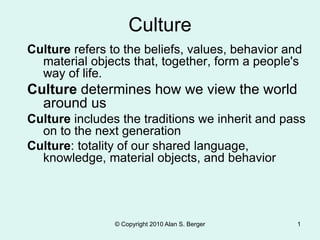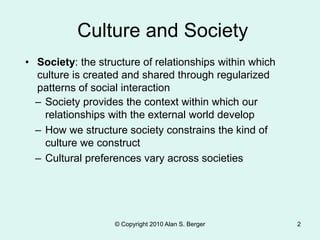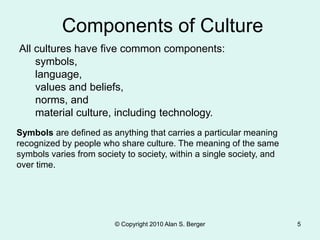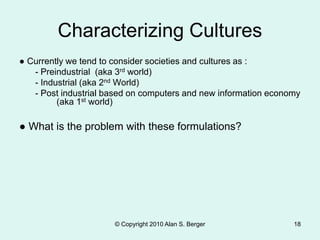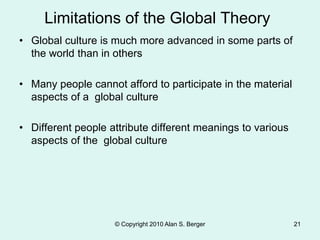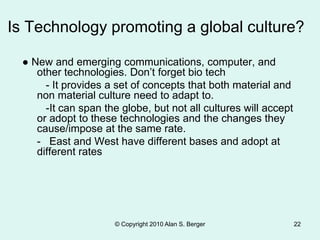This document discusses key concepts related to culture. It defines culture as the beliefs, values, and ways of life shared by a group of people. Culture is learned and includes both material and non-material aspects. Society provides the context for culture and influences how culture develops. While culture varies across societies, there are also common components of culture like symbols, language, values, norms, and material objects. The document examines theories for analyzing culture and discusses factors like globalization, technology, and diversity that influence cultural change.
